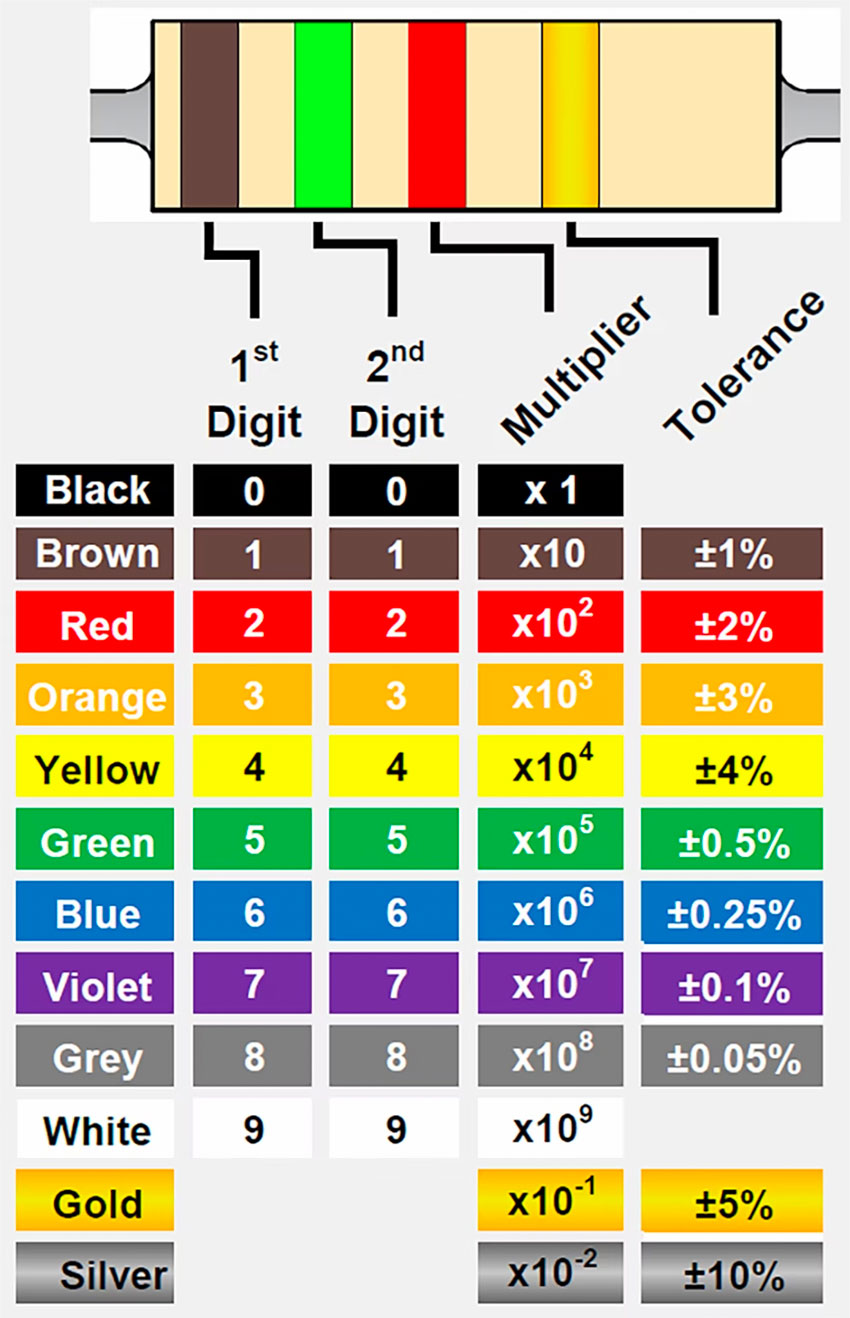Voltage / Resistance / Current
Voltage $=V=$ Potential difference
- is always between two points.
- sometimes means relative to ground.
- All the points on the same wire are considered to be ~ at the same potential.
Ground is a place we call zero volts
- Sometimes is it literally connected into the physical ground (Earth!)
- Often it is connected to the chassis.
Current is the flow of charge.
- By convention it is the flow of positive charges. (Negative electrons in a copper wire are literally moving opposite of the direction shown on circuit diagrams.)
- Current flows from high to low potential (voltage): "Downhill" to the "ground".
Because of the voltage difference between two points, current flows through a wire or device.
Kirchhoff's Laws
Loop Law ($V$)
For any path that leaves a point in a circuit and returns...add up the changes of voltage along the way... the sum must be zero.
That is tracing any closed path, you must come back to the same voltage you started at.
Conservation of energy.
For example [sketch] (a little algebra...) $$\begineq V_{AB}+V_{BC}+V_{CD}+V_{DA}&=0\\ V_{AB}+V_{BC}&=-V_{CD}-V_{DA}\\ V_{AB}+V_{BC}&=V_{DC}+V_{AD}\\ \endeq $$
Node Law ($I$)
At any point in a circuit, just as much charge must come in as goes out.
Conservation of charge.
Since current is the charge / second passing through a point, this means that at any point the rate of charge arrival must equal the rate of departure: $$I_\text{in}=I_\text{out}.$$
For example, if we know the directions of currents for one set of specific directions [sketch], we might have: $$\begineq I_\text{in} &= I_\text{out}\\ I_1 &= I_2+I_3. \endeq $$
Ohm's law: $V=IR$
This is not so much a universal law, as it is an observation about a certain category--resistors--of circuit elements.
Re-arranging Ohm's law... $$ V=IR \ \ \Leftrightarrow \ \ R=\frac VI \ \ \Leftrightarrow \ \ I=\frac VR.$$
Units
| $I$, Current | Amps: A, mA, $\mu$A |
| $R$, Resistance | Ohms: $\Omega$, k$\Omega$, M$\Omega$ |
| $V$, Voltage | Volts: V, mV, $\mu$V |
Resistor markings
Starting at 0: "Better Be Right Or Your Great Big Venture Goes West".
